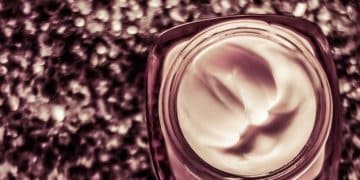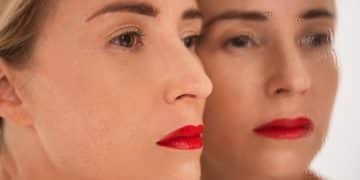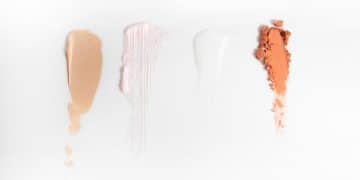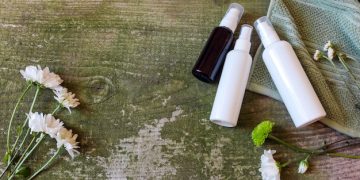The Power of Primers: Choosing the Perfect One for Your Skin
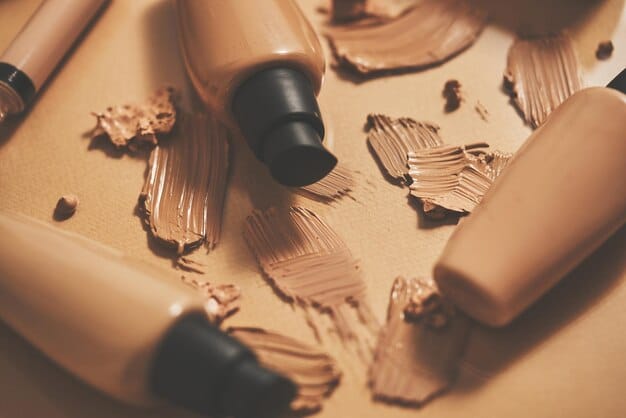
The Power of Primers: Which One Is Right for You? (Comparison & Analysis) explores different primer types and their benefits, helping you select the ideal primer to address specific skin concerns and achieve a flawless makeup application, considering factors such as skin type, desired finish, and active ingredients.
Unlock the secret to flawless makeup with the right primer. The Power of Primers: Which One Is Right for You? (Comparison & Analysis) will guide you through the many options, ensuring your makeup lasts and looks its best.
Understanding the Basics of Makeup Primers
Makeup primers are the unsung heroes of a flawless beauty routine. They create a smooth canvas for makeup application, extend its wear, and address various skin concerns. Understanding how they work is crucial for achieving your desired look.
From minimizing pores to controlling oil, primers offer a range of benefits beyond simply prepping the skin. Let’s delve into the key functions and ingredients that make primers so effective.
What Exactly Does a Primer Do?
A primer acts as a base layer between your skincare and makeup. It fills in fine lines, blurs imperfections, and creates a barrier to prevent makeup from sinking into pores. This results in a smoother, more even complexion.
Key Ingredients to Look For
Primers often contain ingredients like silicones, polymers, and antioxidants. Silicones create a silky texture, while polymers help makeup adhere to the skin. Antioxidants, such as Vitamin E, protect the skin from environmental damage.
- Silicones: Provide a smooth, even surface.
- Polymers: Enhance makeup longevity.
- Antioxidants: Offer protection against free radicals.
Choosing the right primer depends on your skin type and desired effect. A mattifying primer is ideal for oily skin, while a hydrating primer works best for dry skin. Experimenting with different formulations will help you find your perfect match.
Ultimately, understanding the basics of makeup primers empowers you to make informed decisions for your beauty routine. By considering your skin type, desired finish, and key ingredients, you can unlock the transformative potential of this often-overlooked product.
Different Types of Primers: A Comprehensive Overview
Navigating the world of makeup primers can be overwhelming, given the sheer variety available. Each type is formulated to address specific skin concerns and deliver unique benefits.
This overview will demystify the different types of primers, helping you choose the one that perfectly complements your skin and makeup goals. Let’s explore the specialized functions of each primer category.

Hydrating Primers
Hydrating primers are formulated to add moisture to the skin. They typically contain ingredients like hyaluronic acid, glycerin, and natural oils. These primers are ideal for dry or dehydrated skin types.
Mattifying Primers
Mattifying primers are designed to control oil and shine. They often contain ingredients like silica or clay, which absorb excess sebum. These primers are perfect for oily or combination skin.
- Hydrating: Adds moisture for dry skin.
- Mattifying: Controls oil for oily skin.
- Color-Correcting: Neutralizes discoloration.
Beyond these common types, there are also specialized primers like pore-minimizing primers, which blur the appearance of large pores, and illuminating primers, which add radiance to the skin. Understanding your skin’s needs and desired finish is key to selecting the right primer.
In summary, the diverse range of primers allows for a tailored approach to makeup application. Whether you seek hydration, oil control, or color correction, there’s a primer designed to enhance your complexion and create a flawless base for your makeup.
Primers for Different Skin Types: Finding Your Match
Choosing the right primer involves understanding your skin type and its specific needs. A primer that works wonders for oily skin might be a disaster for dry skin, and vice versa.
This section explores the best primer options for various skin types, ensuring that your makeup not only looks great but also benefits your skin’s health. Let’s match the perfect primer to your unique skin characteristics.
Oily Skin
For oily skin, a mattifying primer is essential. Look for oil-free formulas with ingredients like silica or charcoal. These will help control shine and keep your makeup looking fresh throughout the day.
Dry Skin
Dry skin benefits from hydrating primers rich in hyaluronic acid and natural oils. These primers add moisture, prevent makeup from clinging to dry patches, and create a dewy finish.
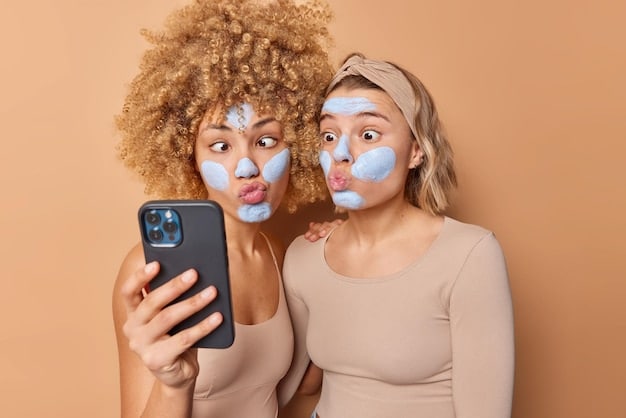
- Oily: Mattifying, oil-free formulas.
- Dry: Hydrating, hyaluronic acid-rich formulas.
- Combination: Balancing, lightweight formulas.
For combination skin, a balancing primer is ideal. These lightweight formulas control oil in some areas while providing hydration to others. They help create a smooth, even base without causing dryness or excess shine.
Ultimately, understanding your skin type is crucial for selecting the right primer. By choosing a formula that addresses your skin’s specific needs, you can enhance your makeup’s appearance and promote healthier, more balanced skin.
How to Apply Primer for Optimal Results
Applying primer correctly can make a significant difference in the longevity and appearance of your makeup. A proper application ensures that the primer effectively prepares the skin and maximizes its benefits.
This section provides a step-by-step guide on how to apply primer for optimal results, ensuring a flawless and long-lasting makeup look. Let’s master the art of primer application.
Step-by-Step Application Guide
Start with clean, moisturized skin. Squeeze a small amount of primer onto your fingertips. Gently massage the primer onto your face, focusing on areas with large pores, fine lines, or uneven texture.
Tips and Tricks for Perfect Application
Allow the primer to set for a few minutes before applying makeup. This allows the formula to fully absorb into the skin. Avoid using too much primer, as this can cause makeup to pill or feel heavy.
- Clean Skin: Start with a clean, moisturized face.
- Small Amount: Use a pea-sized amount of primer.
- Allow to Set: Let the primer absorb before applying makeup.
For targeted application, use a small brush or sponge. This allows you to precisely apply primer to areas like the T-zone or around the eyes. Avoid rubbing the primer in vigorously, as this can disrupt the skin.
In conclusion, proper primer application is key to achieving a flawless and long-lasting makeup look. By following these steps and tips, you can ensure that your primer effectively prepares your skin and maximizes its benefits, resulting in a smoother, more even complexion.
Common Mistakes to Avoid When Using Primers
While primers can significantly enhance your makeup, using them incorrectly can lead to undesirable results. Avoiding common mistakes is crucial for maximizing the benefits and achieving a flawless finish.
This section highlights the most frequent errors people make when using primers, ensuring that your application is seamless and effective. Let’s learn how to steer clear of primer pitfalls.
Using the Wrong Type of Primer
One of the most common mistakes is using a primer that doesn’t suit your skin type. Applying a mattifying primer to dry skin, for example, can cause flakiness and discomfort. Always choose a primer formulated for your specific skin needs.
Applying Too Much Primer
Less is more when it comes to primer. Applying too much can create a heavy, greasy feel and cause makeup to pill or separate. A pea-sized amount is usually sufficient for the entire face.
- Wrong Type: Choose a primer that suits your skin type.
- Too Much Product: Use a small amount to avoid a heavy feel.
- Skipping Skincare: Always moisturize before applying primer.
Another common mistake is skipping skincare before applying primer. Primer should always be applied after cleansing and moisturizing. This creates a smooth, hydrated base and allows the primer to adhere properly.
In summary, avoiding these common mistakes is essential for achieving the best results with makeup primers. By choosing the right type, using the appropriate amount, and following a proper skincare routine, you can unlock the full potential of primers and create a flawless, long-lasting makeup look.
Top Primer Recommendations: Our Expert Picks
With so many primers on the market, choosing the right one can feel overwhelming. This curated list features top primer recommendations based on different skin types, concerns, and budgets.
These expert picks have been thoroughly tested and reviewed, ensuring that you find a primer that delivers exceptional results. Let’s explore the best primers available to enhance your beauty routine.
For Oily Skin:
For oily skin, the Hourglass Veil Mineral Primer stands out for its oil-absorbing properties and pore-blurring effect. It creates a smooth, matte base that keeps makeup in place all day.
For Dry Skin:
Dry skin will love the Laura Mercier Hydrating Primer, which is infused with moisturizing ingredients like glycerin and hyaluronic acid. It provides a boost of hydration and prevents makeup from clinging to dry patches.
- Hourglass Veil Mineral Primer: Best for oily skin.
- Laura Mercier Hydrating Primer: Best for dry skin.
- Benefit Cosmetics The POREfessional: Best for minimizing pores.
If minimizing pores is your main concern, the Benefit Cosmetics The POREfessional is a cult favorite. Its silky texture fills in pores and fine lines, creating a smooth, flawless canvas.
Ultimately, the best primer depends on your individual needs and preferences. These top recommendations offer a great starting point for finding a primer that enhances your makeup and addresses your specific skin concerns, leaving you with a radiant and flawless complexion.
| Key Point | Brief Description |
|---|---|
| ✨ Primer Basics | Prepares skin, extends makeup wear. |
| 💧 Hydrating Primers | Adds moisture, ideal for dry skin. |
| 🧽 Application Tips | Apply to clean, moisturized skin in a thin layer. |
| 🚫 Mistakes | Avoid wrong type/too much primer. |
Frequently Asked Questions
▼
A makeup primer creates a smooth base, extends makeup wear, and addresses skin concerns like pores and oiliness for a flawless look.
▼
Consider your skin type. Oily skin benefits from mattifying primers, while dry skin needs hydrating ones for best results.
▼
Yes, primer can be worn alone to smooth skin, minimize pores, and control shine for a natural, refined look.
▼
Use a pea-sized amount of primer for your entire face to avoid a heavy feel and ensure even application.
▼
Yes, always moisturize before applying primer to create a hydrated base, allowing the primer to adhere properly and work effectively.
Conclusion
Choosing the right primer and applying it correctly can transform your makeup game. By understanding the different types of primers and tailoring your choice to your skin type, you can achieve a flawless, long-lasting look that enhances your natural beauty.
